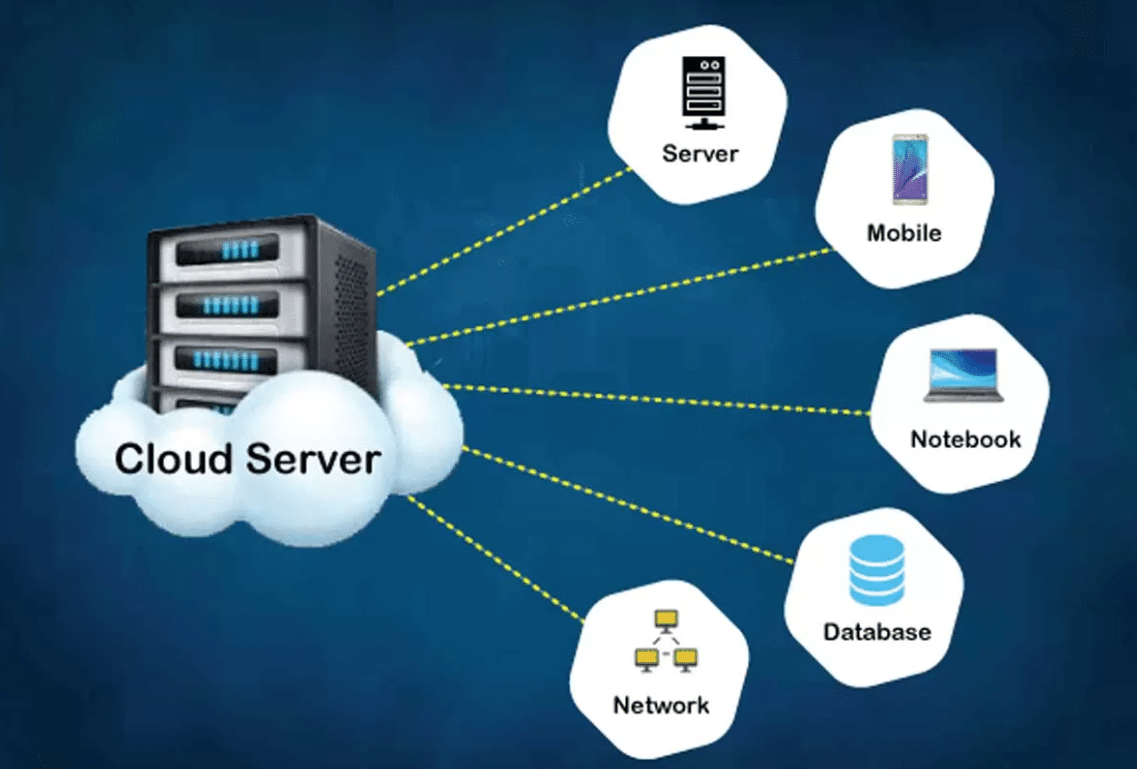In recent years, cloud computing has transformed the way businesses and individuals manage data, run applications, and deliver services. One of the essential components of this revolution is the server in the cloud—a highly flexible and scalable solution that replaces traditional on-premise infrastructure. As organizations increasingly seek agility, cost-efficiency, and performance, cloud servers have become a vital part of modern IT architecture.
This article provides a comprehensive look into what servers in the cloud are, how they work, their types, advantages, challenges, and how they are revolutionizing various industries.

What Is a Server in the Cloud?
A server in the cloud refers to a virtual or physical server that is hosted remotely by a cloud service provider and delivered over the internet. Unlike traditional servers, which require physical space, electricity, cooling, and hands-on management, cloud servers are maintained in global data centers and managed by providers such as Amazon Web Services (AWS), Microsoft Azure, or Google Cloud Platform (GCP).
These servers offer computational power, storage, database management, and application hosting capabilities without the user needing to own or maintain the hardware.
How Do Cloud Servers Work?
Cloud servers operate through virtualization, where one physical server is partitioned into multiple virtual servers using hypervisors. Each virtual machine (VM) operates independently, with its own operating system, applications, and resources.
Cloud users can access and manage these servers using dashboards or APIs provided by the cloud provider. Depending on the service model, users can choose from:
-
Infrastructure as a Service (IaaS) – Users manage virtual machines and storage (e.g., AWS EC2).
-
Platform as a Service (PaaS) – A platform for developing and deploying applications without managing the underlying infrastructure (e.g., Heroku).
-
Software as a Service (SaaS) – Fully functional software accessible via browsers (e.g., Google Workspace).
Types of Cloud Servers
1. Public Cloud Servers
These servers are shared across multiple users (multi-tenancy). Public cloud is cost-effective and scalable.
-
Pros: Low upfront cost, high scalability.
-
Best for: Startups, SaaS companies, general applications.
2. Private Cloud Servers
Dedicated to a single organization, these servers offer enhanced privacy and control.
-
Pros: Strong security, full customization.
-
Best for: Financial institutions, healthcare, government.
3. Hybrid Cloud Servers
This model combines public and private cloud elements, allowing sensitive data to stay in private clouds while leveraging the scalability of public ones.
-
Pros: Flexibility, cost optimization.
-
Best for: Businesses with regulatory requirements.
4. Multi-Cloud Servers
Uses services from multiple cloud providers to avoid reliance on one vendor and to enhance resilience.
-
Pros: Reduced risk of downtime, price negotiation.
-
Best for: Enterprises seeking redundancy and flexibility.
Advantages of Using Servers in the Cloud
1. Scalability
With cloud servers, scaling is instant and easy. You can add more CPU, memory, or storage with a few clicks or automatically based on usage.
2. Cost Efficiency
You pay only for what you use. There’s no need to buy expensive hardware or maintain it.
3. High Availability
Cloud providers offer built-in redundancy and failover systems, ensuring services remain online even during hardware failures.
4. Global Accessibility
Access your server from anywhere, anytime. This enables remote work, distributed teams, and global service delivery.
5. Security
Cloud providers use advanced security protocols, including encryption, intrusion detection, firewalls, and frequent updates.
6. Performance
Optimized infrastructure and content delivery networks (CDNs) ensure low latency and high performance, regardless of location.
Common Use Cases
1. Website and Application Hosting
Cloud servers are ideal for hosting dynamic websites, mobile apps, or enterprise software due to their speed and reliability.
2. Software Development and Testing
Developers can quickly set up test environments without investing in physical machines.
3. File Storage and Backup
Store large volumes of data securely and access them anywhere. Many businesses use cloud servers for secure backups.
4. Data Analysis and Machine Learning
High-performance cloud servers with GPUs allow the processing of massive datasets and training of ML models.
5. Email and Collaboration Tools
Email services, calendars, and collaborative platforms like Microsoft 365 or Google Workspace rely on cloud servers.
Leading Cloud Server Providers
1. Amazon Web Services (AWS)
The largest cloud provider with services like EC2 (compute), S3 (storage), and Lambda (serverless computing).
2. Microsoft Azure
Offers virtual machines, AI tools, and integrations with Microsoft software.
3. Google Cloud Platform (GCP)
Known for analytics, AI/ML services, and scalable compute instances.
4. IBM Cloud
Enterprise-grade services with a focus on AI, blockchain, and hybrid environments.
5. Oracle Cloud
Popular in the enterprise sector for hosting databases and enterprise resource planning (ERP) tools.
Security in the Cloud
Security is a top priority for cloud servers. Best practices include:
-
Data Encryption – Encrypt sensitive data in transit and at rest.
-
Access Controls – Use identity and access management (IAM) to restrict and monitor access.
-
Regular Updates – Keep systems updated to avoid vulnerabilities.
-
Backups – Schedule automated backups and ensure they’re stored in different regions.
Cloud providers also comply with international standards like ISO/IEC 27001, SOC 2, GDPR, and HIPAA.
Challenges and Considerations
1. Downtime and Outages
Despite high availability, outages can happen. Consider multi-region or multi-cloud deployments for critical services.
2. Latency
Applications requiring real-time responses may experience latency due to data center distance.
3. Vendor Lock-In
Relying heavily on one provider can make it difficult to migrate services later.
4. Data Compliance
Some regulations require data to be stored within specific jurisdictions.
5. Cost Management
Without proper monitoring, usage can increase costs significantly. Budget alerts and auto-scaling help mitigate this.
The Future of Servers in the Cloud
The evolution of cloud computing is far from over. Here are trends shaping its future:
1. Edge Computing
Edge servers process data closer to users, improving speed and reducing latency for applications like IoT and autonomous vehicles.
2. Serverless Architecture
Serverless platforms let developers run code without managing any infrastructure. You only pay for execution time, not idle server time.
3. Artificial Intelligence Integration
Cloud platforms are offering AI and ML tools that democratize access to intelligent systems.
4. Quantum Computing
Cloud providers are exploring quantum computing as a service, which could revolutionize data processing in the future.
5. Sustainability
Data centers are moving toward carbon-neutral operations, with investments in renewable energy and efficient cooling systems.
Best Practices for Cloud Server Deployment
-
Define Requirements – Clearly identify what you need in terms of performance, security, and compliance.
-
Automate Provisioning – Use Infrastructure as Code (IaC) tools like Terraform.
-
Monitor Continuously – Set up dashboards to track server health, traffic, and costs.
-
Backup Strategically – Don’t rely solely on built-in redundancy; maintain off-site backups.
-
Regularly Update and Patch – Keep your systems secure and functional.
-
Test Disaster Recovery – Ensure your backups and failover mechanisms actually work.
Conclusion
The concept of the server in cloud is not just a technological advancement—it is a strategic advantage for modern organizations. It enables greater flexibility, lower costs, better performance, and global access. As businesses grow increasingly digital, the reliance on cloud infrastructure will only deepen.
Understanding how cloud servers work and applying best practices ensures that individuals and companies can leverage the full potential of this powerful resource. From startups to global enterprises, embracing cloud servers today means preparing for a more connected, efficient, and scalable tomorrow.

